How To Use A Hotel Competitor Pricing Scraper For Hilton And Marriott Rates?

Introduction
In today's highly competitive hospitality industry, understanding what your competitors are charging can make the difference between thriving and merely surviving. A Hotel Competitor Pricing Scraper has become an essential tool for hoteliers looking to optimize their rates against major chains like Hilton and Marriott. This technology allows you to gather crucial market intelligence and develop data-driven pricing strategies that maximize your revenue while maintaining competitive positioning.
Why Competitor Price Monitoring Matters in the Hotel Industry?
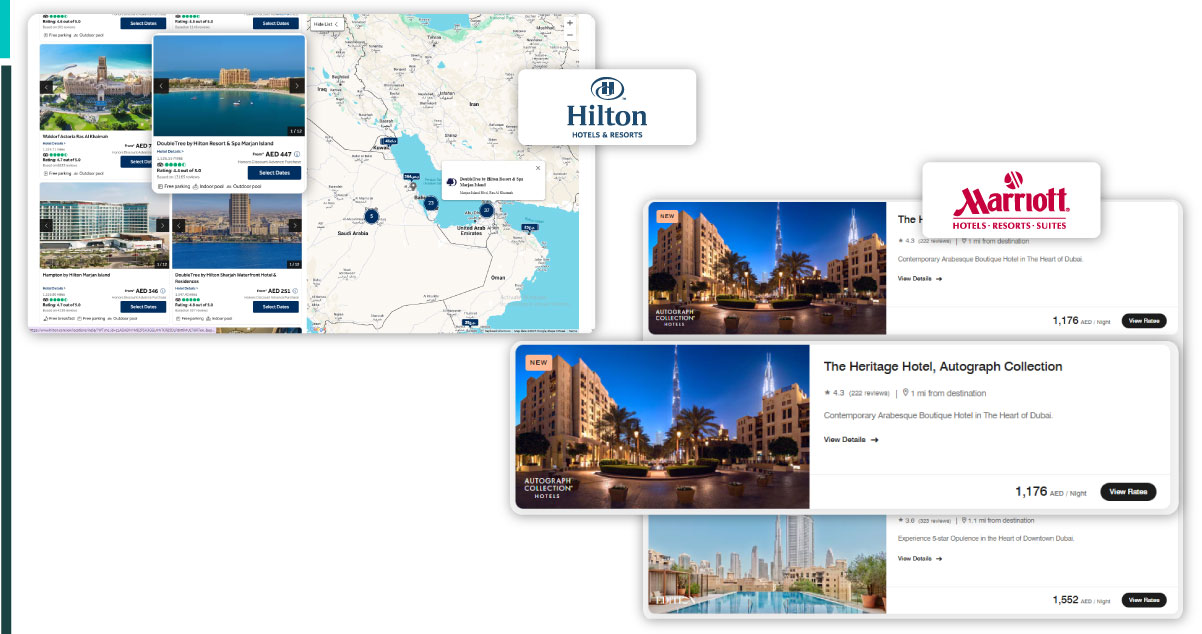
In the fast-paced world of hospitality, pricing strategies can make or break a hotel's performance. With rates shifting multiple times a day due to changing demand, seasonality, and competitor activity, staying ahead requires more than intuition—it demands data-driven insight.
Without accurate Competitor Price Monitoring, hotels may face critical setbacks such as
- Overpricing rooms and losing valuable bookings to more competitively priced rivals.
- Underpricing and sacrificing potential revenue due to lack of visibility.
- Missing windows of opportunity during high-demand periods like holidays or significant events.
- Failing to respond swiftly during low-occupancy seasons, leading to unsold inventory.
That’s where Competitor Price Monitoring comes in. You eliminate the guesswork by implementing reliable systems to Extract Hotel Price Data. Access to real-time pricing information from leading brands like Hilton and Marriott empowers your team to make confident, competitive decisions.
With the right insights, you can align your rates with market conditions, stay ahead of the curve, and refine your revenue strategy to deliver stronger bottom-line results.
Understanding Hotel Price Scraping Technology
Before exploring implementation strategies, it's essential to grasp the fundamentals of Web Scraping For Hotel Rates. This process involves the automated extraction of publicly accessible pricing data from hotel websites, OTAs (Online Travel Agencies), and various booking platforms.
A robust Hotel Price Data Scraping solution is typically composed of several core components:
- Automated Data Crawlers: These bots systematically scan competitor websites to collect real-time pricing information.
- Data Processing Modules: Once collected, raw data is cleaned, normalized, and structured into a usable format.
- Insightful Analytics Dashboards: These tools turn structured data into meaningful insights through reports, visualizations, and comparative analysis.
- System Integration Frameworks: Seamless connections with internal systems like PMS or RMS (Property or Revenue Management Systems) ensure the data flows smoothly into your operational pipeline.
Today’s advanced Hotel Data Intelligence platforms go beyond basic scraping. They incorporate AI-driven analytics, predictive pricing algorithms, and real-time syncing capabilities—empowering hotel operators to make smarter, faster revenue decisions.
Essential Data Points to Monitor with Your Pricing Scraper
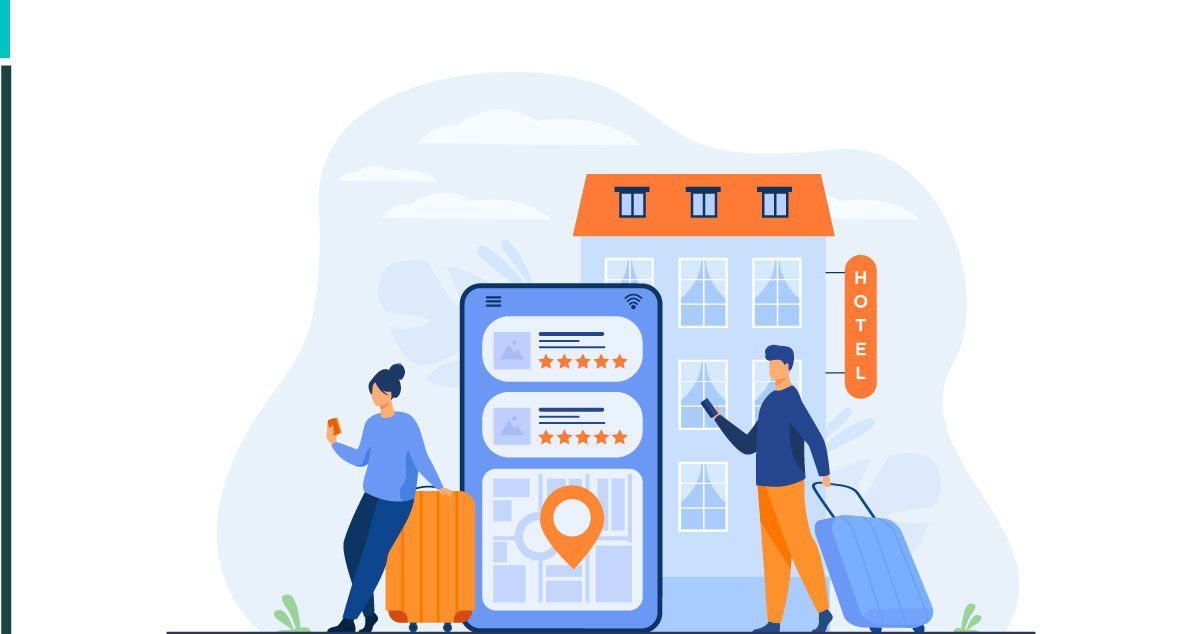
Configuring your Marriott Competitor Rate Scraper or tracking Hilton properties effectively requires going beyond basic rate comparisons to gain a true competitive edge in the hospitality industry. A robust and insightful approach to Competitor Hotel Rate Intelligence should incorporate a broad spectrum of pricing data and contextual market signals.
Key Pricing Metrics to Capture
- Base room rates for both standard accommodations and upgraded room categories.
- Room rates are pulled from multiple channels, including official brand websites, OTAs, and mobile apps.
- Dynamic pricing based on length-of-stay variables (1-night, weekend, week-long stays, etc.)
- Limited-time promotional offers, bundles, and seasonal packages.
- Publicly listed corporate discounts and group booking rates.
Broader Market Intelligence to Track
- Real-time availability indicators (especially dates with high occupancy or fully booked status)
- Details on cancellation policies, rebooking options, and refund flexibility.
- Loyalty-specific incentives such as member-only pricing and tier-based perks.
- Pricing for ancillary services like breakfast, parking, spa access, or in-room upgrades.
Collecting this well-rounded dataset empowers you to drive meaningful insights into your Hilton Pricing Strategy Data, allowing your pricing models to reflect the base rate and the entire value proposition competitors offer.
Setting Up Your Hotel Competitor Pricing Scraper
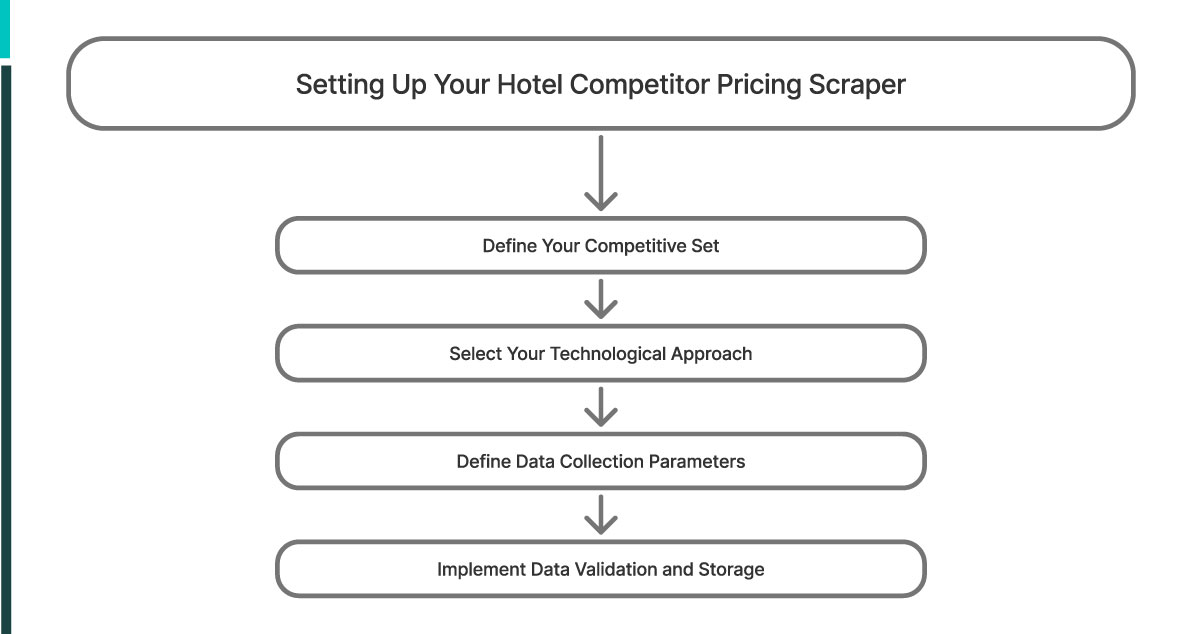
Implementing an efficient system to Scrape Hotel Pricing Reports requires strategic planning and the proper technological foundation. Follow these key steps to ensure a seamless setup:
1. Define Your Competitive Set
Start by pinpointing the exact properties you wish to track. When monitoring large hotel chains, specify which Hilton and Marriott properties align as your direct competitors.
Consider these critical factors:
- Geographic proximity: Properties located in or around your area.
- Star rating and service level: Compare properties with similar standards.
- Target customer segments: Understand the type of guests they serve.
- Price positioning: Ensure you're comparing hotels with similar pricing strategies.
Avoid casting too wide a net. Concentrate on a focused set of 5-10 properties that most directly compete for your target guests' attention.
2. Select Your Technological Approach
There are several methods to implement Web Scraping For Hotel Marketing and pricing intelligence:
Build an In-House Solution
Pros: Complete control, tailored to your unique needs, no ongoing subscription fees.
Cons: Requires technical expertise, ongoing maintenance, and potential legal issues.
Use Specialized Scraping Software
Pros:Lower upfront development costs, quicker setup.
Cons:Limited customization and potential reliability challenges.
Subscribe to Hotel Data Scraping Services
Pros: Turnkey, professionally managed solution, legally compliant.
Cons: Subscription costs and limited customization options.
For many mid-sized and larger hotel operations, opting for Hotel Data Scraping Services often balances cost, dependability, and compliance.
3. Define Data Collection Parameters
Set up your scraper to capture the most relevant data by specifying these essential factors:
- Time Horizon: Determine how far in advance pricing data should be gathered. Depending on your needs, this can range from 90 to 365 days.
- Collection Frequency: Decide how often pricing updates should be fetched. Daily updates work well, but some periods may require more frequent, even hourly, updates.
- Booking Scenarios: Identify the types of stays you wish to track, including duration variations, room types, and guest configurations.
- Special Events: Consider incorporating dates related to local events, holidays, and peak demand periods into your data collection for a more comprehensive pricing analysis.
4. Implement Data Validation and Storage
Once raw data is collected, it’s essential to validate it for accuracy. Your system should be designed to:
- Identify and flag any irregular price changes for further investigation
- Consider various room types and amenities to ensure accurate price comparisons
- Archive historical data to identify pricing trends and patterns
- Build Hotel Room Rates Datasets that allow for in-depth analysis over time
Analyzing Competitor Pricing Data for Strategic Insights
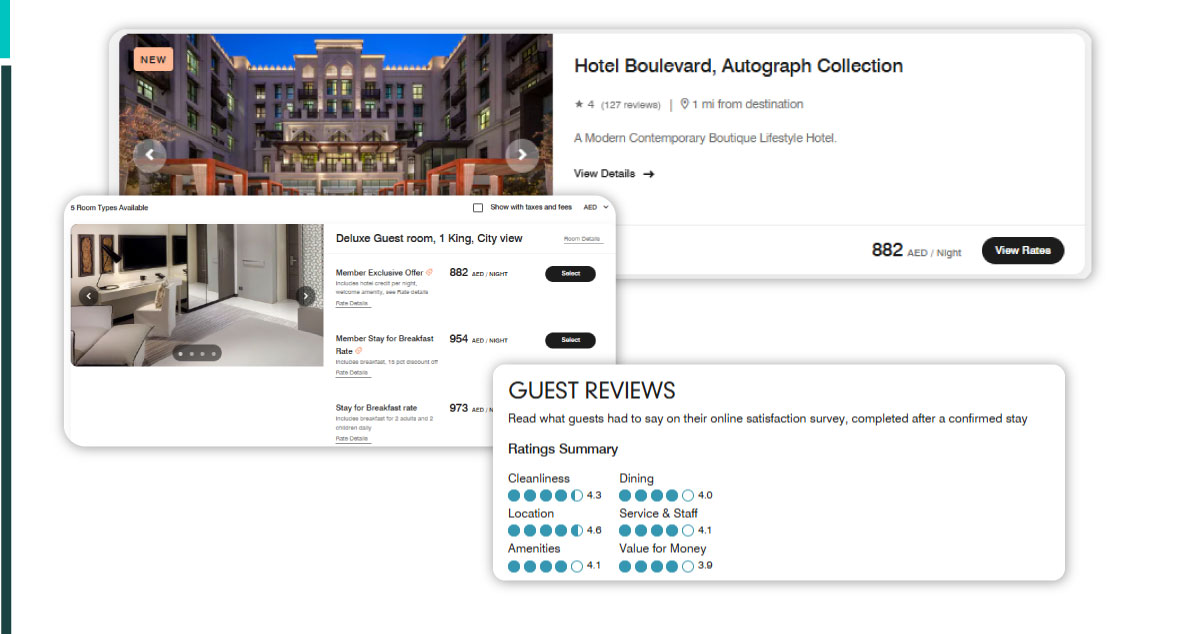
Collecting data is the first step, but the value lies in turning raw information into actionable insights. To effectively leverage your Hotel Room Rates Datasets, follow these steps:
-
Establish Your Baseline Positioning:
To analyze competitor pricing data effectively, begin by determining your property's relative position within the market. Understand whether your pricing consistently sits above, below, or at parity with similar Hilton properties.
Compare how your rates align with Marriott properties within your competitive set. Additionally, assess your positioning during different demand periods, both high and low. This foundational analysis is essential for shaping all future strategic decisions.
-
Identify Pricing Patterns and Triggers:
Next, look for recurring pricing behaviors among competitors. Identify properties that lead price increases during peak demand seasons and those that aggressively discount during low-demand periods. Observe if certain days of the week show consistent price fluctuations.
Please pay attention to how large chains, like Hilton and Marriott, adjust their rates around special events. Recognizing these patterns lets you anticipate your competitors’ pricing strategies, allowing you to adjust rather than react proactively.
-
Segment Analysis by Guest Type and Channel:
Pricing strategies must be tailored based on guest segments. Segment your data by different traveler types, such as business versus leisure, group versus individual bookings, direct bookings versus OTA channels, and loyalty program members versus non-members.
This granular analysis often reveals opportunities to optimize pricing for specific customer segments, offering tailored pricing solutions to boost revenue.
-
Combine Price Data with Review Sentiment:
For a comprehensive competitive analysis, merge your Hotel Guest Review Dataset with pricing data. This combination offers critical insights into whether competitors with higher pricing provide proportionally better guest experiences.
It also uncovers opportunities where superior service quality can justify higher rates. Conversely, it highlights potential risks when pricing doesn’t align with customer satisfaction, providing actionable insights for adjustments.
Implementing Dynamic Pricing Strategies with Competitor Data

To effectively optimize pricing based on market dynamics, leveraging your Hotel Revenue Optimization Data is crucial. You can implement dynamic pricing strategies responsive to competitor actions by conducting robust analysis. Here's how to take advantage of competitor data:
1. Establish Rules-Based Pricing Algorithms
Develop automated pricing algorithms that respond dynamically to competitor actions:
- If Competitor A raises weekend rates by more than 15%, increase our rates by 10%.
- Ensure a $20 price advantage over Competitor B for early bookings.
- Limiting our premium to a 25% markup above the market average during city-wide events.
These customized rules enable your pricing model to adjust seamlessly, aligning with market movements while maintaining a competitive edge.
2. Develop Strategic Rate Fences
Utilize competitor insights to build effective rate fences designed to optimize revenue generation:
- Restrict advance purchases based on competitor booking trends.
- Implement length-of-stay conditions during peak periods to manage demand.
- Introduce package deals that offer competitive value compared to top hotel chains like Hilton or Marriott.
- Create member-exclusive rates that rival competitor loyalty programs.
These strategic moves ensure your pricing structure remains competitive and profitable across varying demand cycles.
3. Create Value-Based Price Positioning
Shift the focus from merely competing on price to competing on value, using competitor data to craft a compelling pricing position:
- If your amenities surpass those of competitors, justify a slight price premium.
- If your competitors provide superior amenities, adjust your pricing with corresponding discounts.
- Develop unique selling propositions (USPs) that emphasize the added value of your offering, reinforcing the price point.
This approach focuses on providing exceptional value, making price differentiation essential to your overall strategy.
4. Implement Testing and Learning Cycles
Leading-edge users of Hotel Competitor Pricing Scraper technology prioritize continuous improvement through testing and iterative learning:
- Test different pricing positions and strategies against competitor data.
- Track the impact on occupancy rates and revenue generation.
- Refine pricing strategies based on real-world outcomes.
- Document key insights and strategies in a comprehensive pricing playbook for future use.
By embracing ongoing testing and adaptation, you can ensure that your pricing strategy remains agile and optimized for maximum profitability.
Leveraging API Technology for Advanced Pricing Intelligence
In today’s dynamic travel and hospitality landscape, hotels aiming for enterprise-level competitive intelligence increasingly turn to Travel Scraping API solutions. Unlike traditional scraping tools, these advanced APIs are specifically designed to deliver richer, more actionable insights at scale.
With a Travel Scraping API, hotels can:
- Continuously monitor competitor pricing across multiple online booking platforms in real time.
- Access granular data on specific room types and rate plans, offering unmatched pricing transparency.
- Analyze historical pricing patterns to uncover seasonal trends and optimize revenue strategies.
- Ensure enhanced legal compliance through controlled, rate-limited access methods approved by platforms.
By adopting API-driven strategies, hotels benefit from quicker deployment, improved data reliability, and scalable operations—making them a more innovative alternative to custom scraping frameworks. Hotels leveraging API-based solutions gain a competitive edge through faster insights and more consistent data streams.
Best Practices for Continuous Price Monitoring
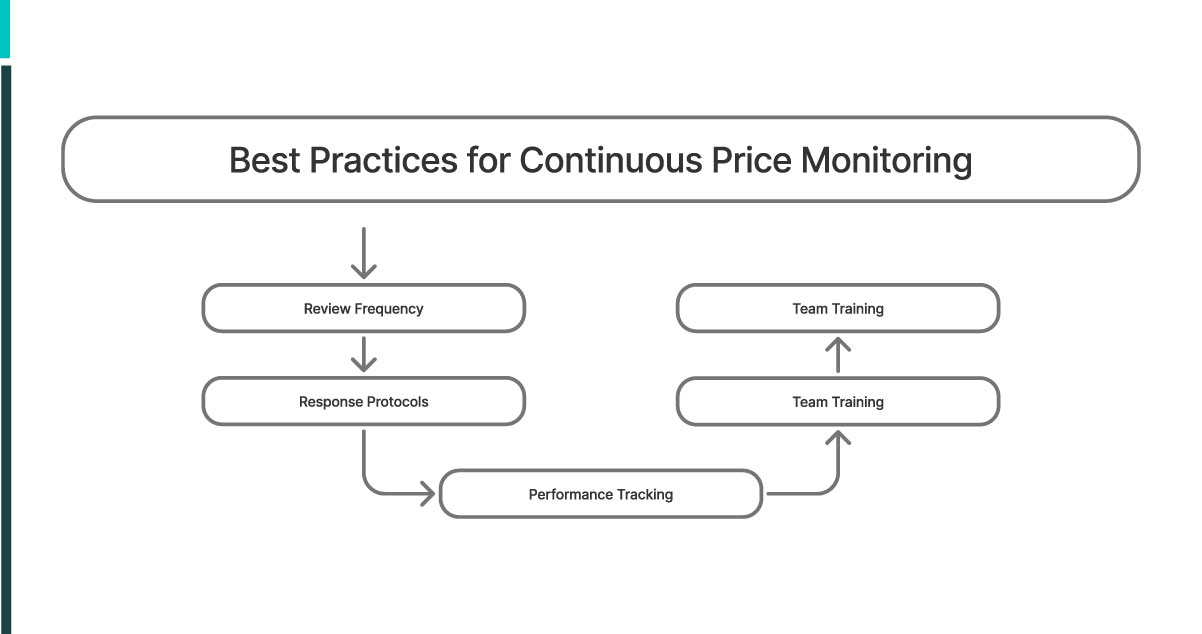
To fully harness the potential of your hotel revenue optimization data, implementing these strategic practices is key:
- Review Frequency: Establish a consistent schedule for competitive pricing reviews. Consider daily checks during peak seasons and weekly reviews during off-peak periods.
- Response Protocols: Create a clear, structured plan for how and when to respond to shifts in competitor prices. This ensures timely and informed decision-making.
- Performance Tracking: Keep a detailed record of how your pricing decisions compare to competitors and measure the impact on your overall performance.
- Team Training: Ensure your entire revenue management team can interpret and take actionable steps based on competitive data, enhancing their decision-making ability.
- Technology Updates: Continuously refine your scraping parameters to keep pace with competitors' changes to their websites or pricing models. This will ensure data accuracy and relevance.
By establishing these systematic processes, competitor price monitoring becomes an ongoing, integral part of your revenue management strategy, not just an occasional task.
How Travel Scrape Can Help You?
We are committed to delivering state-of-the-art Hotel Data Intelligence solutions tailored to hotels competing with prominent chains like Hilton and Marriott. Our platform offers the following key features:
- Customized competitor tracking dashboards designed around your unique competitive landscape.
- Advanced analytics that turn raw Hilton Pricing Strategy Data into clear, actionable insights.
- Automated alerts that notify you of significant shifts in competitor pricing.
- Seamless integration with your existing revenue management systems.
- A compliance-first approach ensuring all data collection adheres to legal standards.
Unlike conventional web scraping tools, our Marriott Competitor Rate Scraper technology is specifically engineered for the hospitality sector, addressing the daily challenges hotel revenue managers face.
Our hospitality data experts work closely with your revenue management team to ensure that the data you collect doesn’t just sit idle—it actively drives impactful revenue growth.
Conclusion
In the increasingly competitive hotel landscape, unthinkingly setting rates without understanding your competitive environment is a recipe for underperformance. Implementing a robust Hotel Competitor Pricing Scraper is no longer optional—it's essential for properties that want to maximize revenue and maintain market share.
Ready to transform your approach to revenue management with professional Travel Industry Web Scraping solutions? Contact Travel Scrape today for a consultation on how our specialized hotel competitive intelligence platform can help you optimize pricing, increase RevPAR, and outperform even the largest competitors in your market.
Our team of hospitality data specialists is ready to help you navigate the complex world of hotel pricing competition and develop strategies that give you an edge over Travel Aggregators and major chains.